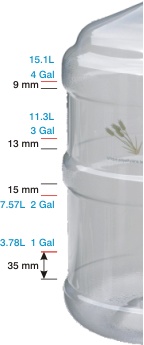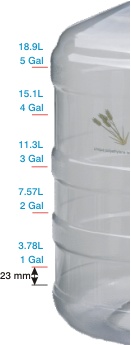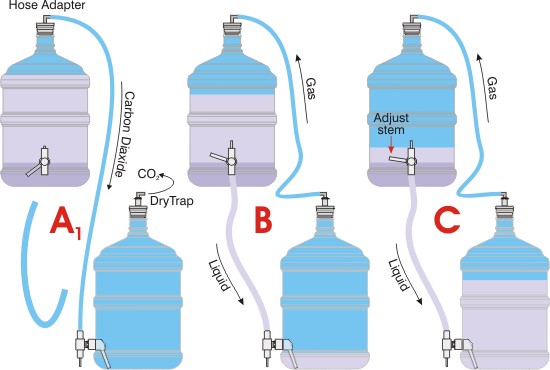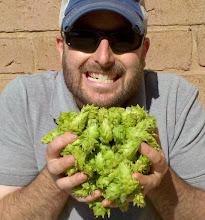 |
| 5 Gallon BetterBottle Volume Levels |
 |
| 6 Gallon BetterBottle Volume Levels |
An even better BetterBottle would have volume levels already marked for the end user. Just sayin! It would have been really awesome if the volume levels were stamped in the actual locations with gallon (at least 0.5 gallon accuracy) and liter markers.
Product information on their website also indicates the nominal volume (5 or 6 gallons) reached at the bottom of the neck.
Overall, I really wish I would have thoroughly navigated BetterBottle's website before using the bottles for the first time. I initially only looked at information for cleaning and sanitizing since my method cleaning glass carboys would end up scratching the internal surfaces (some use a brush anyway). I really didn't look beyond their suggestions for cleaning and sanitizing.
There's some other great information on the website that I would have also found very useful. One immediate discovery one gains when using a BetterBottle for the first time is that the flexible walls create back pressure on standard 3-piece airlocks. I typically use a bit of Star-San solution in my airlocks and really don't want this in my beer. Lifting or moving a full BetterBottle can squeeze the internal volume causing positive pressure to be released by the airlock. Once you put down the bottle, the pressure is reversed, creating a negative pressure internally. 3-piece airlocks are designed to only expel positive pressure from the bottle so when there's negative pressure, the liquid inside the airlock gets sucked into the bottle. Very unchillindamos! Better Bottle's website shows what happens:
 | |
| Effects of positive and negative pressure on 3-piece airlocks using BetterBottles. |
Another really cool use of their DryTap is for oxygen-free transferring. Check this out:
 |
| Similar to using a Carboy Cap, BetterBottle's DryTap can also be used for oxygen-free transferring. |
After using BetterBottles for a while now, I'm a fan. Strong, extremely light, safe, and fairly easy to clean, homebrewers and home wine makers can't go wrong. Of course, I'd rather have a stainless steel conical but for 5 gallon purposes, the BetterBottle is the best choice out there.
Speaking of cleaning these things, I'm likely going to get this Carboy Cleaner to get out the stubborn yeast build-up when PBW doesn't seem to be enough. I'm simply going to buy the replacement pads and bolt them on my lees stirrer since it only gets occasional use. Hopefully, using the Carboy Cleaner will make using BetterBottles even better.
Image Sources:
BetterBottle Product Images. Digital image. Better-Bottle Bottles, Better-Bottle Carboys, and Better-Bottle Fermenters for Home Winemaking and Home Brewing. High-Q, Inc. Web. 16 Apr. 2011.










